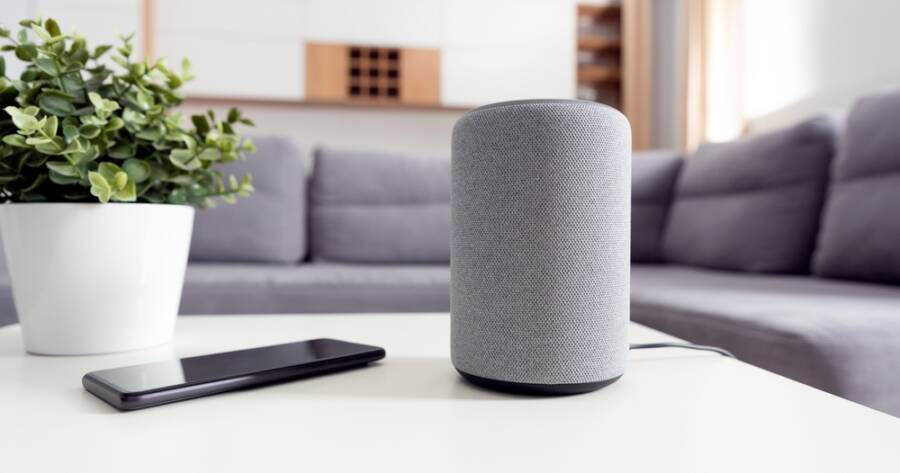Choosing the right smart speaker isn’t just about voice commands or smart home compatibility — it’s about how it fits your space. Whether your home features a cozy studio apartment or an open-concept living room, room size plays a big role in sound quality, placement, and user experience. By matching smart speaker size and performance to the room it will live in, you’ll get richer audio and smoother control without wasting features or space.
Small Spaces: Bedrooms, Home Offices, and Nooks
In rooms under roughly 200 square feet, smart speakers don’t need enormous drivers or booming bass — clarity and compatibility matter more. These compact rooms benefit from models designed to project voice and music clearly without overwhelming nearby walls or shared living spaces. Even smaller smart speakers are now offering surprisingly strong sound and smart-home control.
Look for a speaker that offers good voice picking-up (so you can talk to it from across the room), and enough bass so voices and music don’t feel flat. Many of these models also act as smart-home hubs, meaning a small unit can both play your favorite music and control lights, locks, or thermostats. Because space is limited, wall shelf or nightstand placement usually works best.
Medium Rooms: Living Rooms and Larger Bedrooms
For rooms around 200-350 square feet — typical living rooms or larger master bedrooms — speakers that combine smart features with stronger sound make the difference. These rooms allow more breathing room for the speaker and benefit from wider stereo stage or more capable drivers. In the expert guides, mid-sized models are often the best balance of performance and value.
When placing your speaker, avoid direct corners or behind heavy furniture which can muddy sound. Instead, aim for an unobstructed surface and give the speaker wall clearance. Choose a model with decent bass and clear mid-range so both music and voice commands come through well. If you host calls or watch shows from this room, the smart speaker often becomes a hub for both sound and control.
Large Spaces: Open-Plan Areas and Multi-Room Setups
Open-plan kitchens, dining rooms, or combined living areas present a bigger challenge: larger space means sound dissipates faster, and multiple seating zones complicate placement. For these rooms, look for smart speakers with larger drivers, better acoustic design, or the ability to link with other speakers for stereo or multi-room setups. Several premium smart speakers now include advanced room tuning and spatial sound features that help fill larger areas.
Placement learning becomes important here. Usually the best spot is elevated (bookcase, stand) so sound projects over furniture. If you host gatherings or watch group movies, a model that supports multi-room playback or stereo pairing offers flexibility. Smart home compatibility still matters — in larger spaces the speaker often plays dual roles (audio and control hub).
Matching Features to Your Lifestyle
Beyond room size, your usage matters. Do you use your smart speaker mainly for voice commands and light music? Or are you hosting movie nights, calling friends, and tapping into smart-home routines? If the former, compact models suffice. If the latter, look for sound-rich features, strong microphones, and robust auto-tune or room correction.
Smart home integration is also key: if you already have smart lights, locks, and plugs, select a speaker that supports the same assistant (Amazon Alexa, Google Assistant, or Apple’s HomeKit) to avoid compatibility issues. Some smart speakers serve as hubs for Matter or Zigbee devices, adding value beyond audio.
Lastly, consider physical placement and wiring. Some rooms are tight on outlets; others have device clutter. A smart speaker that blends aesthetically or sits unobtrusively in a corner can make a big difference in how you live with it day to day.
Sound That Fits the Room
The “best” smart speaker isn’t the biggest or the flashiest — it’s the one that fits your space and supports how you live. In small rooms, clarity and smart features matter most. In medium spaces, balanced sound and control capabilities shine. In open-plan areas, strong drivers and multi-room options make the difference.
When you match sound to space and use to lifestyle, your smart speaker becomes more than a gadget. It becomes a seamless part of your home — handy, musical, and quietly smart. Consider the aforementioned factors to find the best sound for your needs.

